Most people are familiar with garden snails, those small, slimy creatures that love to munch on tender plants. What many people don’t know is that garden snails lay eggs. In fact, a female snail can lay up to 100 eggs at a time. So, what do garden snail eggs look like?
What Snail Eggs Look Like?
Garden snail eggs are small and round, white and translucent with smooth shiny surfaces. Garden snail hatchlings are very small, and they are often difficult to see with the naked eye. The young snails typically spend the first few weeks of their lives underground, emerging only to feed on plants at night. Once they reach maturity, garden snails can lay up to 400 eggs per year. Here’s how and what garden snail eggs look like.
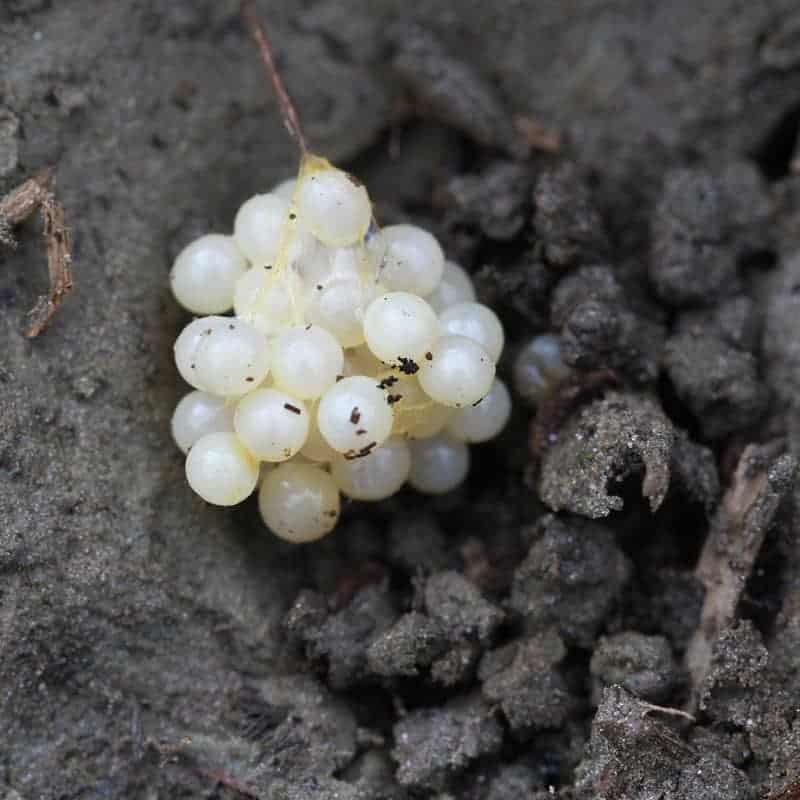
Where Do Snails Keep Their Eggs?
After mating, the snails exchange sperm and each produces a batch of eggs. The eggs are usually white or pale yellow in color and are approximately 4 millimeters in diameter. Garden snails typically lay their eggs in damp, shady places such as beneath rocks or leaves. Once the eggs hatch, the young snails feed on decaying plant matter and gradually grow to maturity. Garden snails are relatively long-lived for invertebrates, with some individuals surviving for 20 years or more in captivity.
What is The Size of Snail Eggs?
Garden snail eggs are small and white, about 1/8 of an inch wide (3-5 mm) or the size of a grain of rice. They are often laid in clusters and can be found in soil, under rocks or dead leaves. If you find a group of garden snail eggs, chances are good that there will be dozens, if not hundreds, more nearby. Garden snails hatch quickly, and the young snails are often able to reproduce within a few months. So if you see garden snail eggs in your garden, it’s best to remove them right away to prevent an infestation.
When Do Snails Lay Eggs?
Although garden snails typically lay eggs in winter, when the soil is wet, these mollusks can actually lay their eggs at any time of year. In fact, captive snails have been known to lay eggs 365 days a year! This is because they do not rely on external temperature or light cues to signal the onset of spawning.
After laying their eggs, most snails will then retreat underground where they live out the rest of the winter hibernation period before emerging again in spring when conditions are more favorable for egg-laying once more.
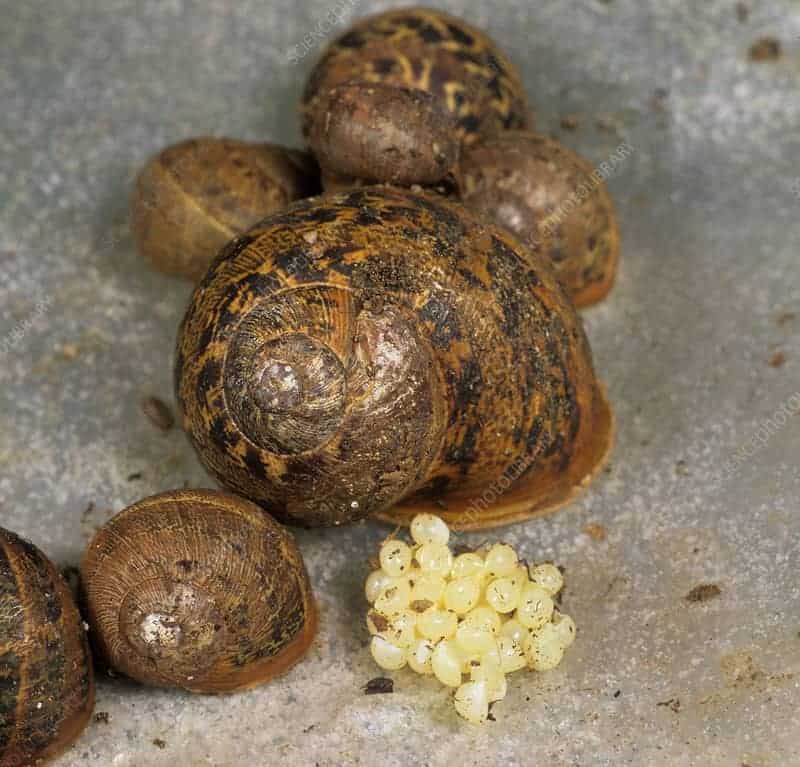
How Many Eggs Do Garden Snail Lay?
One of the most fascinating things about garden snails is their reproductive habits. A snail can lay up to 100 eggs at a time, and she will typically produce several batches of eggs each year. The eggs are typically laid in moist soil or under rocks and leaves, where they will be protected from the sun and predators. Once they hatch, the young snails will spend the next few years gradually growing to adulthood.
How Long Does It Take For Snail Eggs to Hatch?
Garden snails are a common sight in many gardens, and their eggs are often found in soil or among plants. But how long does it take for these eggs to hatch? Garden snail eggs usually take about two weeks to hatch. The exact time can vary depending on the temperature and humidity levels, but typically, it takes around 14 days for the baby snails to emerge from their eggs.
Once they hatch, the young snails are fully independent and able to start feeding on their own. If you find garden snail eggs in your garden, you can either leave them be or move them to another location. However, remember that it only takes a few weeks for them to hatch, so you may want to keep an eye on the area!
How Long Does It Take for Baby Snails to Mature?
The life cycle of a garden snail is a complex and interesting process. These small, slithery invertebrates generally take around two years to fully mature and reach adulthood. During this time, they undergo a number of distinct stages that include hatching from an egg, growing into a tiny larva, and eventually developing into a full-size adult. Once a baby snail has reached its full size, it typically takes another six months or so to undergo metamorphosis and enter the adult stage.
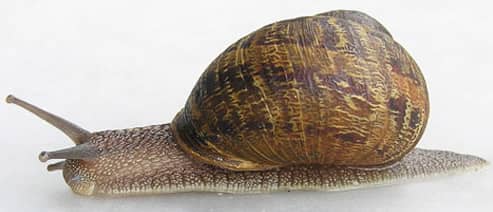
Are Snails Dangerous?
While most people think of snails as harmless creatures, there are actually several species that can pose a danger to humans. For example, the conus snail is a type of sea snail that produces a venomous toxin. This toxin can cause paralysis and even death in humans if it is not promptly treated. In addition, some species of land snails can carry harmful bacteria that can cause food poisoning.
Are Snails Harmful to Your Garden?
In many respects, snails can be seen as a gardener’s worst nightmare. They are voracious plant feeders, capable of consuming entire beds of tender plants in just a matter of days. They are also notoriously difficult to get rid of, often attracting neighborhood cats or other animals when they come out at night.
However, whether or not snails should actually be considered harmful to your garden depends on the specific situation. Some types of snails might do relatively little damage to your plants, while others may be quite destructive. The key lies in knowing what type of snails are present in your garden and taking appropriate action to deal with them accordingly.
In general, though, if you have a serious snail infestation on your hands, it is best to take measures to get rid of them as soon as possible. This will help ensure the health and wellbeing of your plants and keep your garden looking its best for years to come!
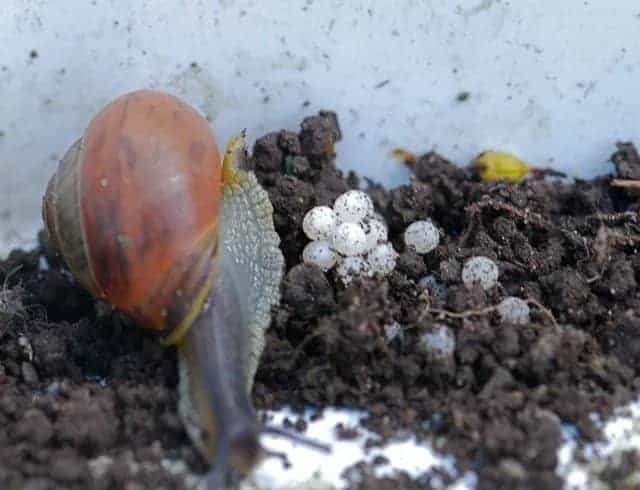
What Do Snails Eat?
In general, younger snails eat a variety of plant matter, such as leaves, twigs, and seeds, while older, more mature snails primarily consume vegetation and fruits. Occasionally, they will also eat dead animals.
Different types of bacon are known to have different preferred food sources. For example, coastal snail species tend to eat seaweed and kelp, while urban snails typically munch on grasses, mosses, and other plants that grow in disturbed or paved areas.
Do Male & Female Snail Both Lay Eggs?
Garden snails are hermaphrodites, meaning that each individual contains both male and female have reproductive organs. However, they cannot fertilize their own eggs and must mate with another snail in order to reproduce.
The process of mating is fairly simple; each snail extrudes a portion of its body called a love dart into the other snail. The love dart is covered in mucus, which contains sperm. Once the sperm is transferred, the snails separate and each begin to lay their eggs.
Garden snails typically lay between 80 and 100 eggs at a time, which hatch after two weeks. The baby snails are born fully developed and require no further parental care.
Although both male and female snails lay eggs, only one of them can produce egg after they decide which one. Yes, they can decide which one should lay egg before mating and once they have fertilized, the specific one will lay egg.
What Eats Snail Eggs?
While these slimy creatures may not be everyone’s favorite garden residents, their eggs are an important food source for many animals. Birds, amphibians, reptiles, and even some mammals will all eat snail eggs if given the opportunity. In addition, many species of insects are known to feed on snail eggs. This is a picture of what do snail eggs look like.
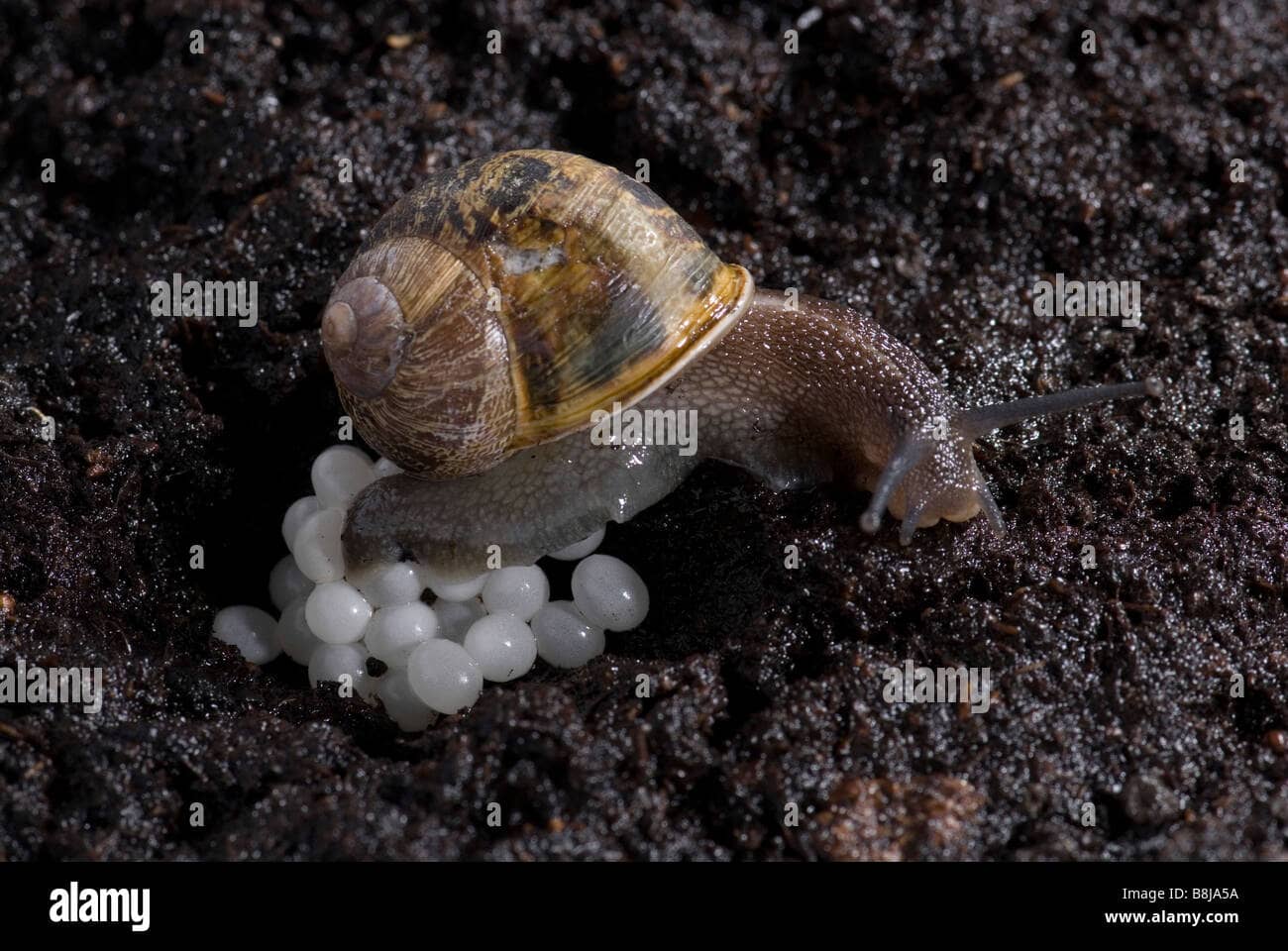
In fact, it is estimated that for every 1,000 snail eggs laid, only about 10 will hatch into young snails. This high rate of predation helps to keep snail populations in check and prevents them from becoming a nuisance in the garden. So while you may not want to encourage animals to eat snail eggs in your own backyard, it is good to know that they play an important role in the ecosystem.
How Many Eggs Do Snails Lay At A Time?
While most species of snail lay between 80 and 100 eggs at a time, some may lay as many as 200. The large number of eggs is insurance against predation and other dangers; only a few are likely to survive to adulthood. The eggs are deposited in protective cocoons, which the mother snail may guard for several weeks until they hatch.
Although individual snails live relatively short lives, some species can live for decades; in captivity, the longest-lived snail on record was a specimen of the common snail that lived to be nearly 15 years old. Given their long lifespans and high reproductive potential, it’s no wonder that snails are considered one of the most successful groups of animals on the planet.
How Many Eggs Do Water Snails Lay?
Water snails are prolific breeders, and a single snail can lay hundreds of eggs at a time. The eggs are laid in gelatinous strings that attach to underwater surfaces. Once the eggs hatch, the juveniles must immediately find food and shelter to survive.
Because they are such easy prey, many of them will not make it to adulthood. However, those that do manage to evade predators will grow to be full-fledged adults, ready to start the cycle all over again. Given the high rate of reproduction among water snails, it’s no wonder that they are a common sight in freshwater bodies all over the world.
How Many Times A Snail Lay Egg In A Year?
Contrary to popular belief, snails actually lay eggs multiple times each year, rather than just one large brood at the end of their lifespan. A single snail can lay up to 5 egg masses in a single year, each containing up to 100 eggs. This not only allows for the snails to continue producing offspring in different seasons and climates, but it also helps to ensure that the young snails have a good chance of survival. Here’s what do snail eggs look like.
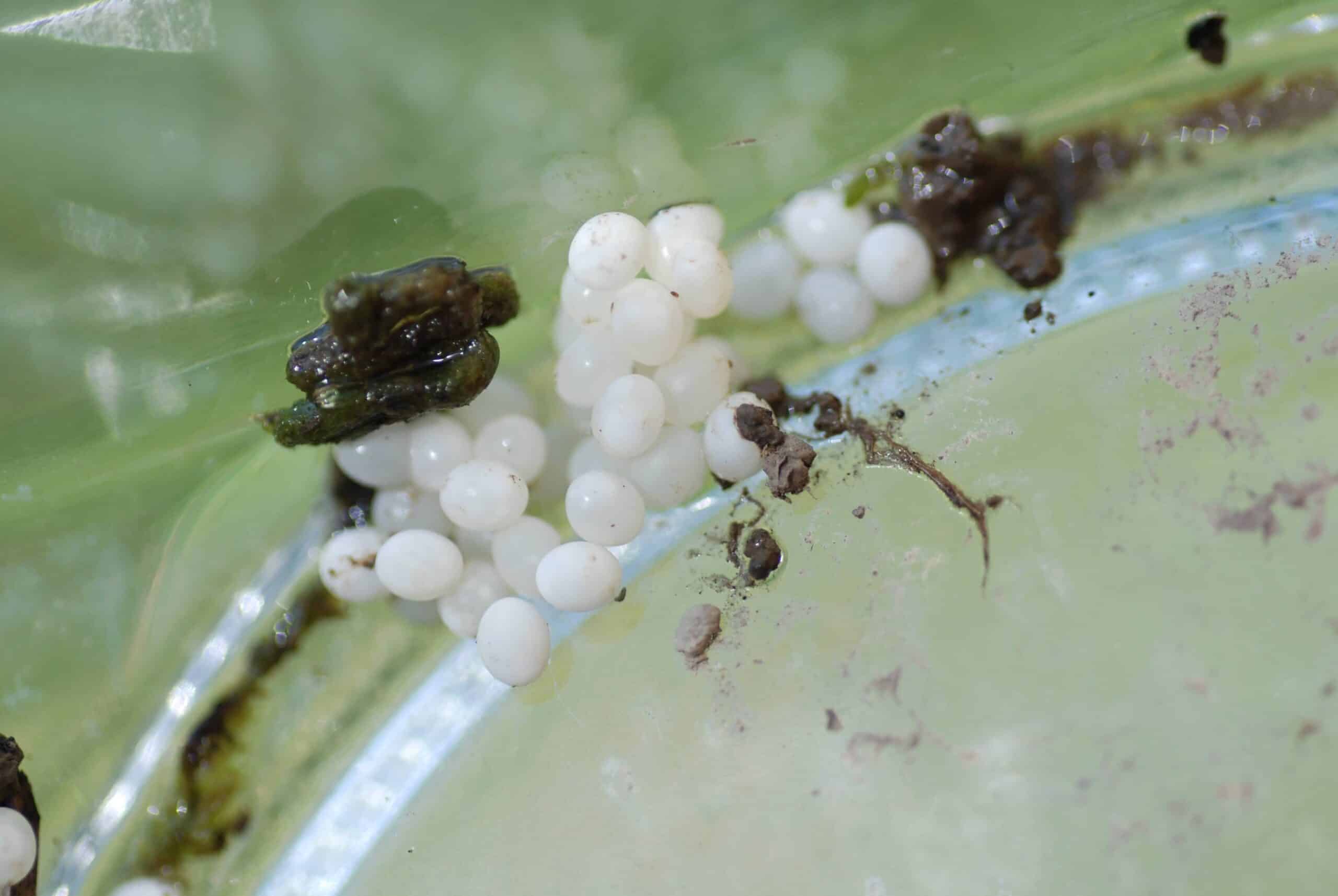
How Many Eggs Can A Snail Lay In A Year?
On average, a small garden snail typically lays between 400 and 450 eggs each year. However, this number can increase significantly under certain circumstances, such as warmer climates or when the snails are in their reproductive phase. In some cases, particularly large and healthy snails have been known to lay over 500 eggs per year.
If we simply calculate the number of eggs garden snails produce at one time, that is 80 – 100 eggs. However, each snail produces eggs 5 times a year. That means 80 x 5 = 400 – 500.
How Do Snails Lay Eggs?
What many people don’t know, however, is how these creatures reproduce. Snails lay eggs, which are then incubated inside the snail’s shell. When the eggs hatch, the young snails emerge and begin to grow.
Snails reach sexual maturity after about two year, at which point they are able to mate and lay their own eggs. The female snail will lay anywhere from 30 to 100 eggs at a time, which she will then protect and care for until they hatch. After about two weeks, the eggs will hatch and the cycle will begin anew. Check out the picture of what do snail eggs look like.
How to Get Rid of Snails In The Garden?
To get rid of snails in the garden, it is important to understand why they are drawn to your plants in the first place. Snails are primarily herbivores, meaning that they prefer to eat plants rather than other animals. In fact, they will often migrate toward gardens and other areas with abundant plant life.
With this in mind, you can effectively reduce snail populations by taking steps to discourage them from lingering in your garden.
Some strategies to try include planting herbaceous plants with strong flavorings, such as oregano and lavender; regularly rotating the crops you grow; and limiting the number of places where snails can hide, such as under rocks and debris.
One popular approach is to set out bowls of beer, as snails are drawn to beer and will often fall into the bowls and drown. Some people prefer more mechanical approaches, such as creating barriers with copper film or fencing off vulnerable plants.
If you’re looking for a chemical solution, there are also a variety of snail baits available that use toxins like metaldehyde or ferric phosphate to poison snails and slow their reproduction rate. Whatever method you choose, it’s important to be patient and persistent, as snails can be stubborn and tenacious in the garden. That was all about what snail eggs look like.


